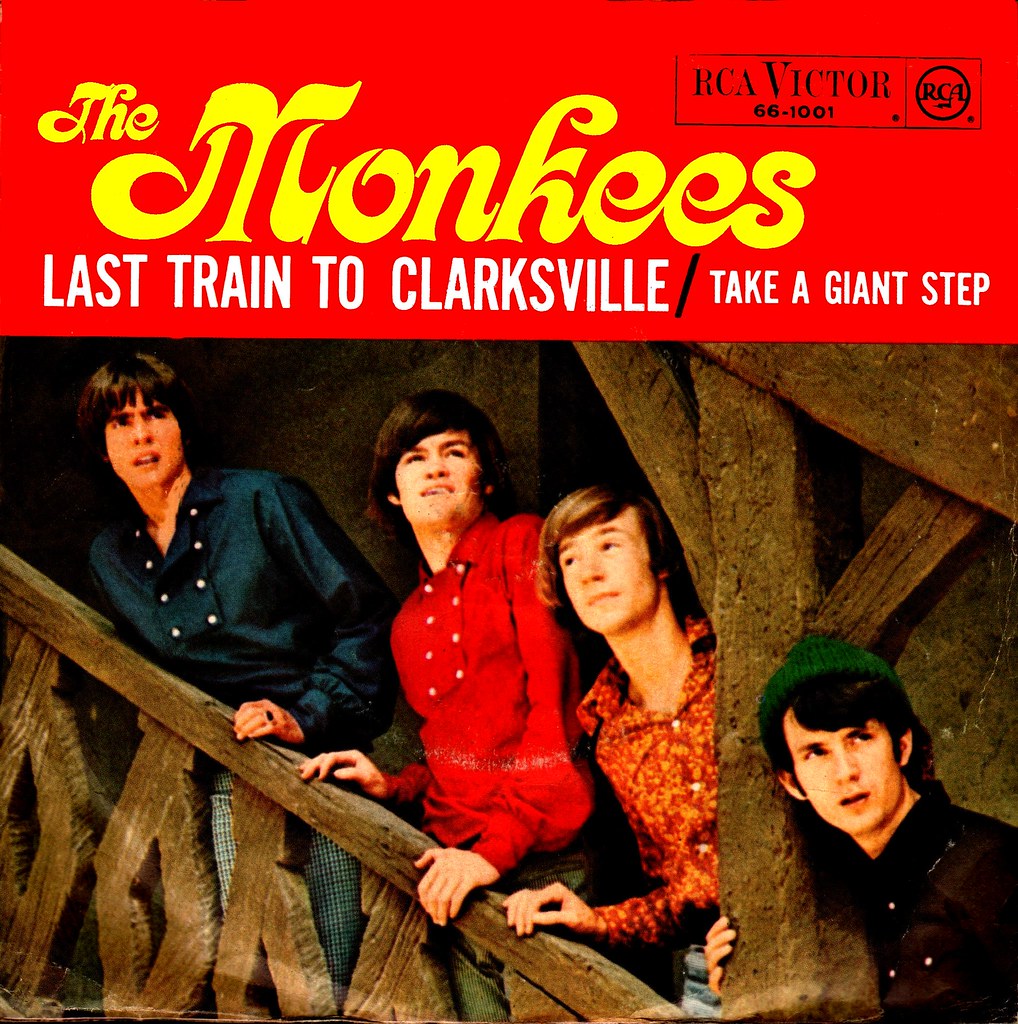“Take the last train to Clarksville
And I’ll meet you at the station
You can be there by 4:30
‘Cause I’ve made your reservation
Don’t be slow
Oh, no, no, no . . .” – Last Train to Clarksville (Boyce/Hart) © Sony/ATV Music
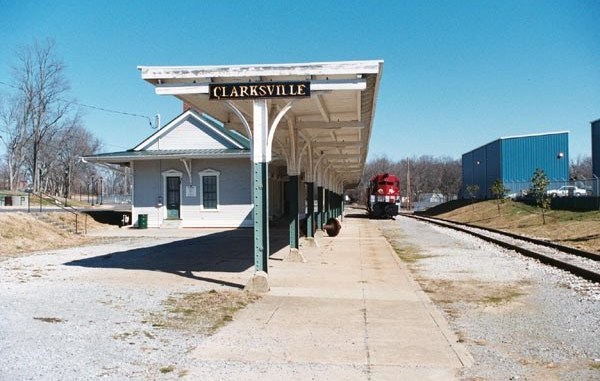
Clarksville is the county seat of Montgomery County, Tennessee. It is the fifth-largest city in the state, with an estimated population of 153,205 in 2017. The city was founded in 1785, incorporated in 1807, and named for General George Rogers Clark, frontier fighter and Revolutionary War hero, and brother of William Clark of the Lewis and Clark Expedition.
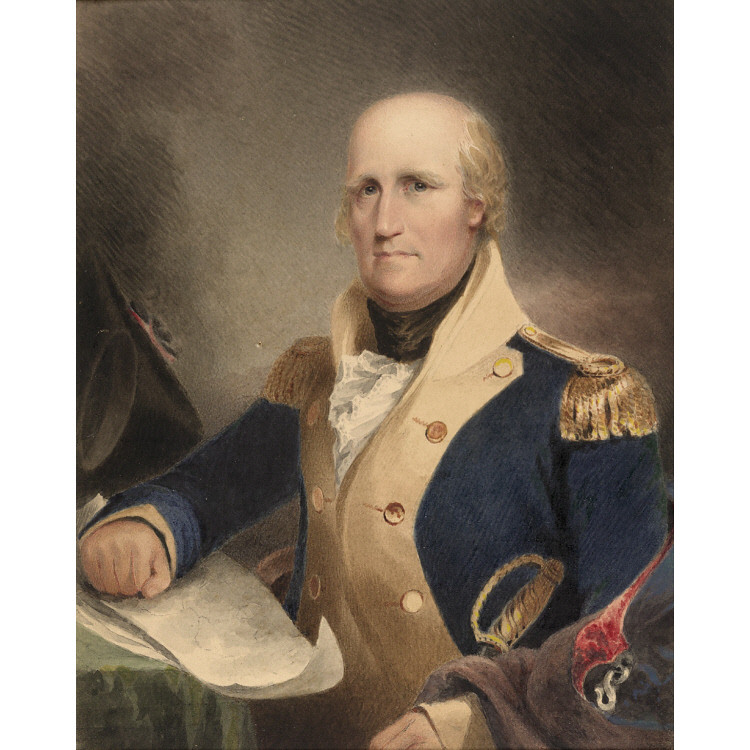
Clarksville was designated as a town to be settled by soldiers from the disbanded Continental Army that served under General Washington during the Revolutionary War. At the end of the war, with the federal government lacking sufficient funds to repay the soldiers, the Legislature of North
Since its inception, the city of Clarksville has had close ties to the military. The city was developed by former Revolutionary War soldiers; during the Civil War a large number of its male population was depleted due to Union Army victories, with many Clarksville men interned at Union prisoner of war camps; Clarksville lost many men in World War I, and World War II saw the formation of Camp Campbell, later Fort Campbell, not far from the city center.
“’Cause I’m leaving in the morning
And I must see you again
We’ll have one more night together
‘Til the morning brings my train
And I must go
Oh, no, no, no . . .” – Last Train to Clarksville (Boyce/Hart)

Fort Campbell is a United States Army base that spans the Kentucky–Tennessee state line. It is located approximately 10 miles from the city center of Clarksville. Though the installation’s post office is in Kentucky, most of its acreage lies in Tennessee. The fort is named in honor of Union Army Brigadier General William Bowen Campbell, a former governor of Tennessee, and is home to the 101st Airborne Division and the 160th Special Operations Aviation Regiment.
The site for Fort Campbell was selected in July of 1941, with the initial survey completed in November of that same year, about the same time Japan’s Imperial Fleet was leaving Japanese home waters for the attack on Pearl Harbor. Soldiers from Fort Campbell, Kentucky have deployed in every military campaign since the formation of the post.
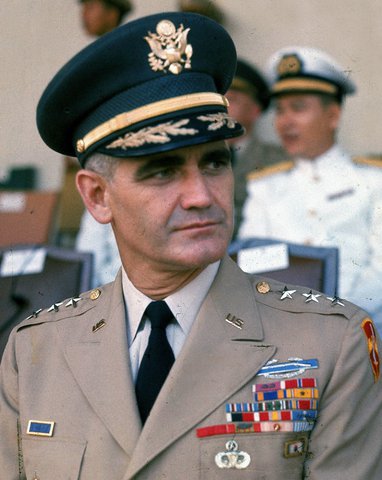
Gen. William Westmoreland 
Gen. Maxwell Taylor
The first 4,000 paratroopers of the 101st Airborne Division arrived in Vietnam in July of 1965, landing at Cam Ranh Bay. Immediately after their arrival, they made a demonstration jump which was observed by
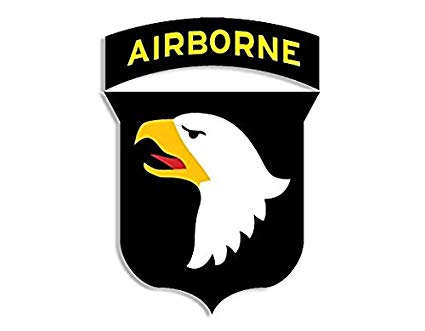
In May of 1966, due to the escalation of action in Vietnam, a Basic Combat Training Center was activated at Fort Campbell. Just weeks later the base received its first 220 newly inducted soldiers.
Side note #1:
In 1961, after a run-in with the law over stolen cars, young James Marshall Hendrix was given the choice to spend two years in prison or join the army. Choosing the army, Pvt. Hendrix was assigned to the 101st Airborne Division and was stationed at Fort Campbell, Kentucky. It was not long before Jimi proved himself wholly unsuited for military life, and although he had signed up for three years, Captain Gilbert Batchman had had enough after one year, and made the case for Hendrix to be discharged, as his problems were judged to not be treatable by “hospitalization or counseling.”

Pvt James Hendrix @ Ft. Campbell 
Pvt. Hendrix
“Take the last train to Clarksville
I’ll be waiting at the station
We’ll have time for coffee
And a bit of conversation, oh
Oh, no, no, no . . .” – Last Train to Clarksville (Boyce/Hart)
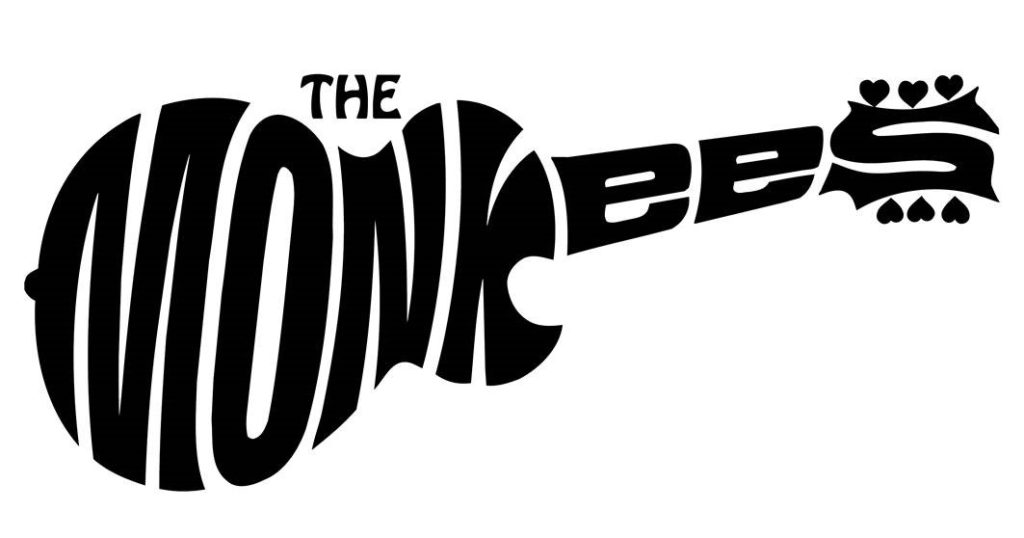
As early as 1962, filmmaker Bob Rafelson had developed the idea for The Monkees but was unable to sell the series. Later he teamed-up with Bert Schneider, whose father was the head of Screen Gems, the television unit of Columbia Pictures, and after seeing the success of The Beatles’ film, A Hard Day’s Night, the pair revived Rafelson’s idea of a show built around an aspiring rock band and were successful in selling the series to Screen Gems Television.
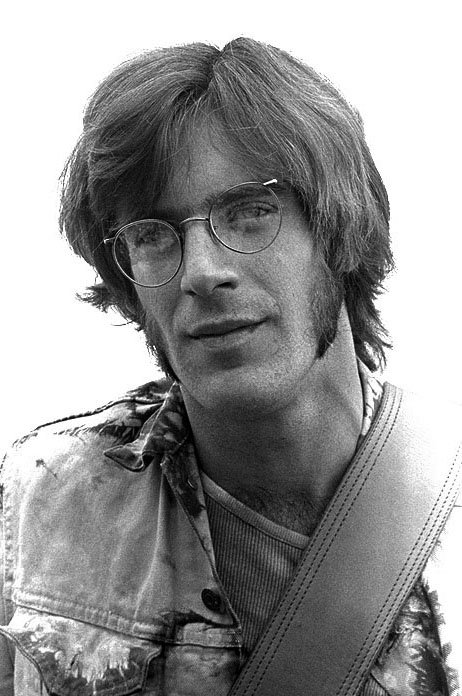
Rafelson and Schneider’s original idea was to cast an existing New York folk-rock group, The Lovin’ Spoonful, who were not widely known at the time. But John Sebastian had already signed the band to a record contract, which would have left Screen Gems unable to market music from the show. The idea then shifted to having actors portray the four band members, and while each of the four actors who were chosen to portray The Monkees had some musical experience, it would initially be left to outside songwriters and musicians to provide the show’s musical soundtrack.
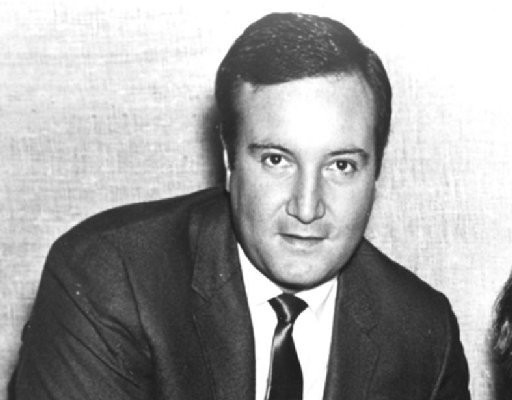
With The Monkees picked up as a series, Columbia-Screen Gems and RCA Victor entered into a joint venture called Colgems Records to distribute the show’s musical releases. Don Kirshner, Screen Gems’ head of music, was contacted to secure music for the show’s pilot. Kirshner would eventually enlist the talents of Neil Diamond, John Stewart, Carole King, and the duo of Tommy Boyce & Bobby Hart, among others, to pen what would become the show’s familiar hits.
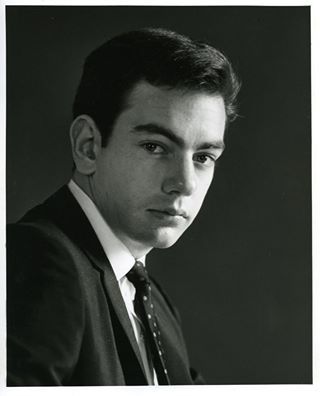
Neil Diamond 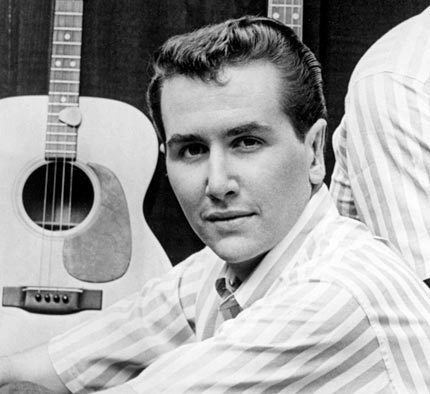
John Anderson 
Carole King
“Take the last train to Clarksville
Now I must hang up the phone
I can’t hear you in this
Noisy railroad station
All alone, I’m feeling low
Oh, no, no, no . . .” – Last Train to Clarksville (Boyce/Hart)

“Last Train to Clarksville” was the show’s first single and first worldwide hit. The song was recorded in July of 1966 and released in August, just a few weeks prior to The Monkees September 12 broadcast debut on the NBC television network. The song topped the Billboard Hot 100 in November of 1966, and would later rank #6 for the year. It was featured in seven episodes of the band’s television series, the most for any Monkees song.
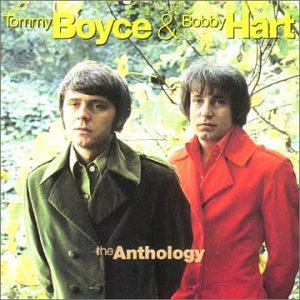
Written by Tommy Boyce and Bobby Hart, the song bears a striking resemblance to The Beatles’ “Paperback Writer”, which is the song that Hart claims inspired him to write “Last Train”. Hart has stated that having turned on the radio to hear the final bars of “Paperback Writer” he believed that Paul McCartney was singing “Take the last train”. Learning that McCartney was actually singing “Paperback writer”, he decided to use the line in a song of his own.
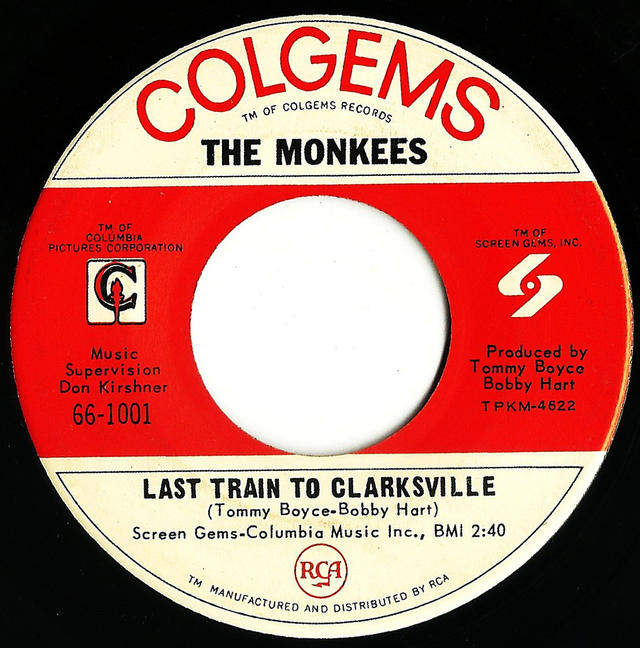
Knowing that The Monkees TV series was being pitched as a music/comedy series in the spirit of The Beatles movie A Hard Day’s Night, Boyce & Hart set out to emulate the Fab Four as they recorded “Last Train to Clarksville” with their own band, Candy Store Prophets. Actor Mickey Dolenz later added his lead vocal track to the original recording.
About the title of the song Hart has explained, “We were just looking for a name that sounded good. There’s a little town in northern Arizona I used to go through in the summer on the way to Oak Creek Canyon called Clarkdale. We were throwing out names, and when we got to Clarkdale, we thought Clarksville sounded even better. We didn’t know it at the time, [but] there is an Army base near the town of Clarksville, Tennessee — which would have fit the bill fine for the storyline. We couldn’t be too direct with The Monkees. We couldn’t really make a protest song out of it — we kind of snuck it in.”
Side note #2:
In 1967, as The Monkees were about to embark on a US tour, Mickey Dolenz recommended hiring Jimi Hendrix to be their opening act, having recently witnessed his performance at the Monterey Pop Festival. Hendrix had characterized The Monkees’ music as “dishwater”, but his manager convinced him to sign on for the tour, for although he’d already had three hit singles in England, he was virtually unknown in the US. The Jimi Hendrix Experience played just eight of the 29 scheduled tour dates; then, on July 16, 1967, Jimi flipped off the Forest Hills, Queens, New York audience, threw down his guitar and walked away from the tour.
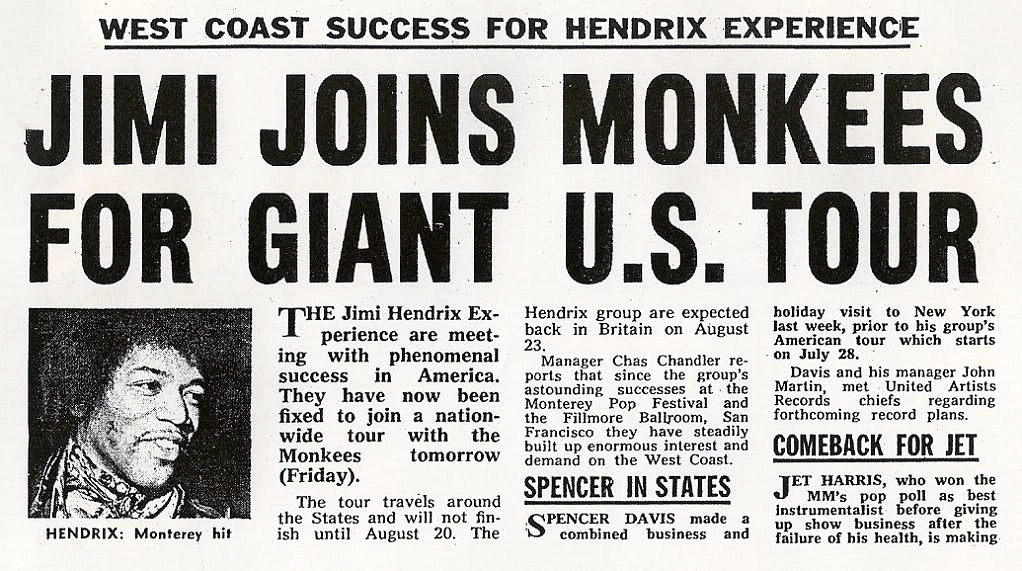
“Take the last train to Clarksville,
And I’ll meet you at the station,
You can be here by four-thirty,
‘Cause I’ve made your reservation, don’t be slow,
Oh, no, no, no . . .” – Last Train to Clarksville (Boyce/Hart)
The 101st Airborne was the last Army division to leave Vietnam, returning to its home base of Fort Campbell, Kentucky. During the war, troopers from the 101st won 17 Medals of Honor for bravery in combat. The division suffered almost 20,000 soldiers killed or wounded in action in Vietnam, over twice as many as the 9,328 casualties of World War II.
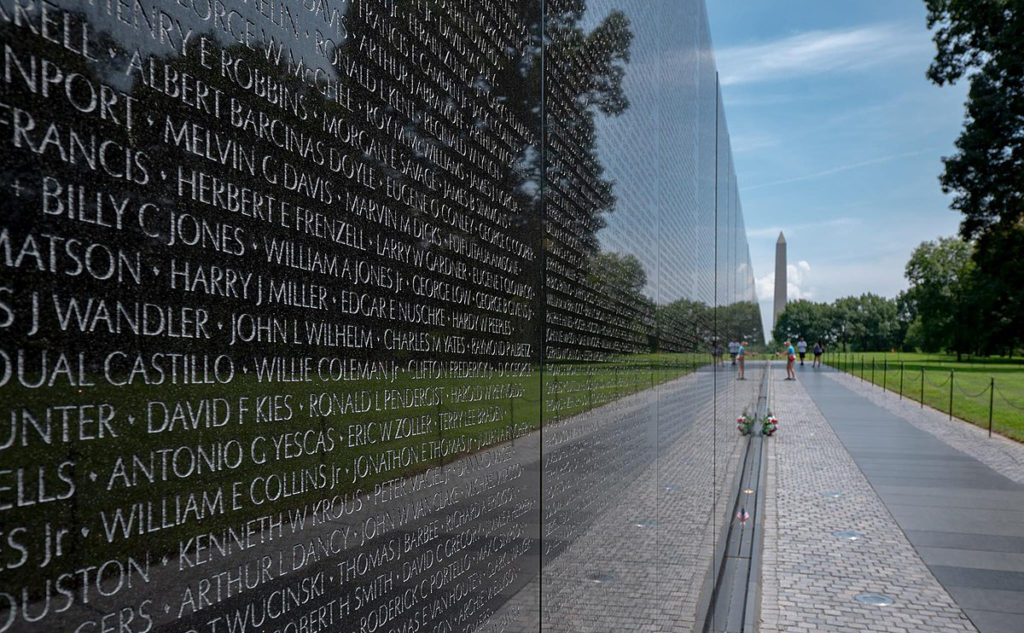
“And I don’t know if I’m ever coming home” – Last Train to Clarksville (Boyce/Hart)
Never Forget!
Sources:
https://en.wikipedia.org/wiki/Clarksville,_Tennessee
https://en.wikipedia.org/wiki/Fort_Campbell
https://www.history.com/this-day-in-history/101st-airborne-division-arrives-in-vietnam
https://en.wikipedia.org/wiki/Last_Train_to_Clarksville
https://www.rhino.com/article/single-stories-the-monkees-last-train-to-clarksville
https://www.songfacts.com/facts/the-monkees/last-train-to-clarksville
All photos sourced through internet searches, none belong to the author.
